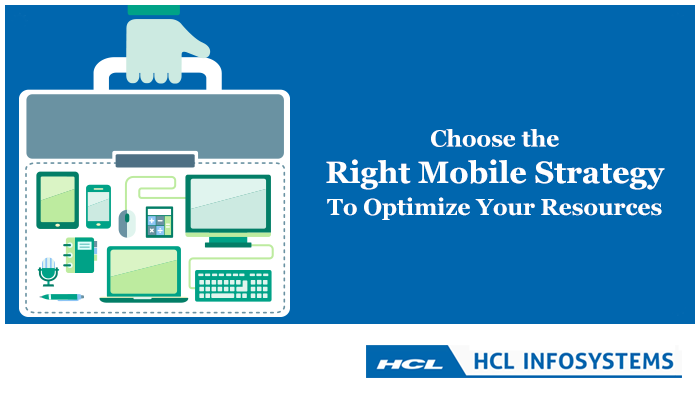
I was consulting a company on their mobile strategy who had divided responsibilities between their co-founders, one being responsible for income and the other for expenses. For a five year old company, they were doing pretty well. They wanted to become an asset light company as over the years they had expanded and made heavy investments on devices which claimed their depreciation.
The problem was they were only making enough to meet their expenses without any surplus savings to upgrade. Additionally, they wanted to be cutting edge in order to provide mobile moments of productivity for employees.
One of the mobile solutions proposed after running a survey with the employees was successful. We proposed a hybrid model BYOD (Bring your Own Device) and CYOD (Choose Your Own Device) applicable for both Smart Phones and Laptops. ? To simplify further, BYOD is when as an employee to a company you use your personal smart phone or laptop to check your official emails and the company in turn reimburses you for using that device for company purposes. Whereas CYOD, is when the company allows you as an employees to choose a smart phone or laptop from a specified brand and model of their choice and either the company or you pay up front for it. If the company is paying, then the same is deducted every month from your salary and if you are paying, then the company will pay you rent for using the device for official purposes.
Examples of other companies were quoted such as Intel reported a saving of 57 minutes a day by using mobile devices in their workplaces. Aberdeen survey of 240 enterprises found that use of mobile apps designed to help employees complete work increased productivity on an average of 45 percent. Mobile devices users in the US federal government gain an estimated nine hours of productivity per week i.e., $284 billion per year in savings.
There are pros and cons in both the solutions, and each department had their own concerns. Each concern was addressed step by step. For example, IT had to setup Security features using Enterprise mobile management through Microsoft InTune. Legal had to ensure implementation and compliance of a consistent mobile device policy. HR had to implement new policies and rules and regulations including informing employees that during final settlement balance amount of device procured under corporate purchase shall be adjusted. Employees were trained through user-awareness training, alternative ways to get connected, guidance on acceptable use, transparency on monitoring activity. In case of a breakdown or loss of device, supply of older device (re-used, refurbished) can be made available for few two weeks during repair or replacement period. We used the BOYD, COYD and COPE (Corporate Owned Personally Enabled) Analysis Template for the Cost Vs Savings calculations which our readers might find useful during their analysis.(click here to download)
The example above, of the company’s proactive participation and risk taking ability in accepting the unique mobile solutions, along with the successful implementation of our offerings, not only led to financial savings, but also encouraging overall organizational team spirit and trust building across all grades of employees. With the right credentials, employees were able to work at any time – whether from a remote office, while travelling, at customer site or from home.
